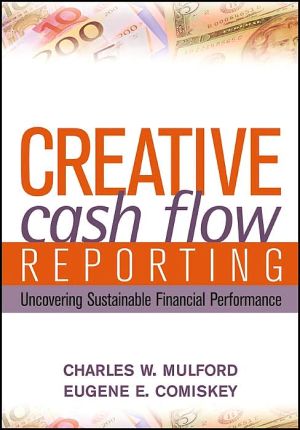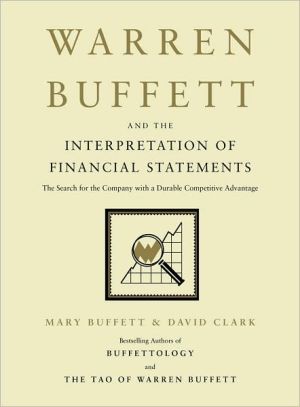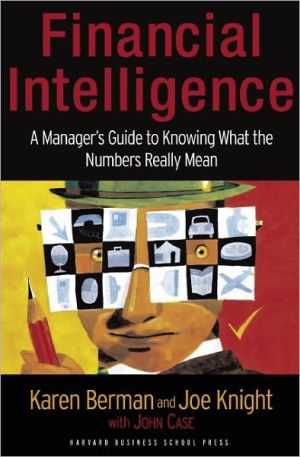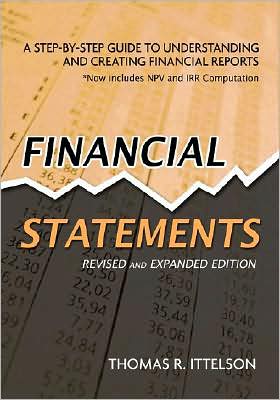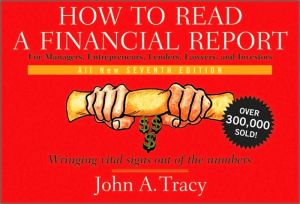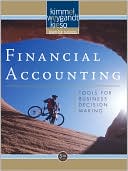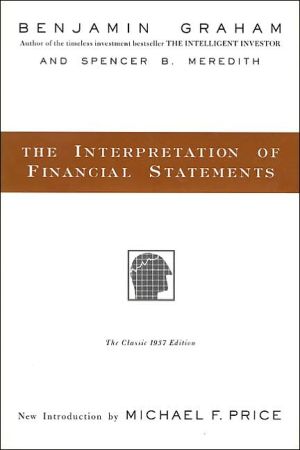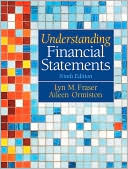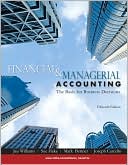Creative Cash Flow Reporting and Analysis: Uncovering Sustainable Financial Performance
Praise for Creative Cash Flow Reporting\ "With Creative Cash Flow Reporting, Charles Mulford and Eugene Comiskey have established themselves as the Graham and Dodd of sniffing out financial shenanigans. This book is destined to become a classic—it is the last word on cash flow."\ —Herb Greenberg, Senior Columnist, CBSMarketwatch.com\ "The combination of academic rigor with excellent accessible writing and explanation on display makes this book extraordinarily valuable for investors of any...
Search in google:
Written in an accessible style, this guide for readers of financial statements reveals how the routine application of current accounting standards can yield misleading operating cash flow statements. Mulford and Comiskey (both accounting, Georgia Institute of Technology) then demonstrate alternative methods of analysis that are more effective in uncovering reported earnings that have been misrepresented through "creative" accounting. The volume is indexed by company as well as subject and features an extensive glossary of terms. Annotation ©2004 Book News, Inc., Portland, OR
Creative Cash Flow Reporting\ \ By Charles W. Mulford \ John Wiley & Sons\ ISBN: 0-471-46918-1 \ \ \ Chapter One\ Seeking Sustainable Cash Flow \ Your cash ain't nothin' but trash ...\ It is hard to overstate the importance of operating cash flow and its closely related, carefully watched, and loosely defined metric, free cash flow, to fundamental measures of debt-service capacity and firm valuation. Such cash flow measures are viewed as being sustainable, providing management with discretionary resources that can be used for investment, reductions in principal on outstanding debt, stock buybacks, and dividends. In addition, analysts, investors, and creditors, burned by the trust they have placed in reported earnings in an era of fraud and deceit in financial reporting, have turned their attention to cash flow as a directional beacon guiding them through the uncharted and risky waters of modern financial analysis. The logic is that, while earnings can be manipulated, both within and outside the parameters we know of as generally accepted accounting principles (GAAP), cash flow is more real and less subject to the vagaries of GAAP or the whims of the accountants.\ The following quotes, made by respected financial professionals, demonstrate this point quite well:\ It's a lot harder to manipulate cash flow from operations than it is earnings per share.\ Cash is fact and accounting profit is opinion.\ Unlike some items that can be clouded with financial reportingissues, cash is real, finite, and measurable. Cash is cash.\ Dividends are tangible cash, and are therefore impossible to fake.\ In an environment where reported earnings are viewed with some degree of skepticism, cash dividends will provide a very strong signal to investors of true financial strength and of the credibility of earnings reports.\ Financial statement readers can generally accept the balance in cash as reported on the balance sheet and the total change in cash as reported on the statement of cash flows as reliable amounts. The balance in cash is so easily verified by a reporting company's auditors through bank confirmation that most companies would not even think of purposefully misreporting it. There are, of course, exceptions. Consider, for example, HPL Technologies, Inc.\ The company, a Silicon Valley-based software firm, was caught allegedly reporting $11 million in fictitious sales out of a total of $13.7 million in the quarter ended March 31, 2002. While such a misstatement is bad enough, the company went further and allegedly reported $10 million in fictitious cash, which according to a spokesperson for the company was "not now and may never have been in the company's possession." Such transgressions in reporting cash are rare. Indeed, the exception proves the rule as the fallacy was readily discovered. When asked about the misreported cash, accounting experts were in agreement as to the brazen nature of the company's acts. Various phrases, such as "A scheme that couldn't possibly succeed," "You'd have to wonder what anyone could be thinking of," and "Outrageous bravado," were used to describe the scheme.\ Consider also the example of Parmalat SpA, Italy's largest food company. As this chapter is being written we find ourselves scratching our heads in amazement at the mystery of the $4.8 billion in cash and securities supposedly belonging to a subsidiary of Parmalat that turned up "missing." Allegedly, the company's auditors were able to confirm with Bank of America Corp. the amount reported to be on deposit. It was later determined, however, that the bank never received the confirmation. It was, in fact, intercepted and forged by someone other than a bank officer and returned to the auditors. The money did not exist.\ At present we do not know how individuals involved in an apparent fraud at Parmalat were able to intercept a bank balance confirmation from the company's auditors and make it appear as if it were being returned in the affirmative from the bank itself. We hasten to stress, however, that an intercepted and forged bank confirmation-a truly exceptional and seldom-occurring event-was required for such a misstatement of cash to occur. While we empathize with the plight of investors and creditors who were misled by financial statements that reported fictitious cash, it remains our position that cash is typically not an asset that is subject to such deceit.\ Although the ending balance in cash and the change in cash from one period to the next are not readily subject to manipulation, the components of total cash flow, the operating, investing, and financing amounts are more susceptible to management. Such steps, collectively referred to here as creative cash flow reporting, may be taken both within and beyond the boundaries of GAAP. Moreover, when financial professionals speak of cash flow and the difficulty of managing or misreporting cash flow, they typically are referring to some measure of operating cash flow or closely related free cash flow. Free cash flow is generally defined as operating cash flow minus capital expenditures and, for companies that pay them, preferred dividends. Thus, while analysts, investors, and creditors might be led to believe that operating cash flow and free cash flow are somehow above the creative accounting fray, that belief is unfounded. Operating cash flow and free cash flow are subject to manipulation, which, unfortunately, occurs often.\ Of course we would not go as far as the opening quote to this chapter and title of the once-popular song by the Steve Miller Band from the 1970s and categorically state, "Your cash ain't nothin' but trash." Indeed, even the final line of that song announces "but I sure better get me some more." Our point is that cash flow, in particular operating cash flow, may not be what it seems. As a result it can give an incorrect impression of a company's sustainable cash-generating capacity.\ AN ARTIFICIAL BOOST TO OPERATING CASH FLOW\ Two examples are provided for consideration. In the first, Mim Corp. used flexibility found in GAAP for cash flow reporting to boost its operating cash flow. In the second, Dynegy, Inc. went beyond the boundaries of GAAP to provide a near-term increase to operating cash flow. The steps taken by both companies provided only a temporary boost to operating cash flow.\ Employing Book Overdrafts\ As part of their cash management practices, some companies may maintain minimal checking account balances. Through a prearranged agreement their bank automatically provides any funding needed to cover checks presented for payment. At the end of an accounting period the bank-reported cash balance will be approximately zero. However, due to outstanding checks that have not been presented for payment, the book balance in cash, which consists of the bank balance less any outstanding checks, will be a negative amount. Generally accepted accounting principles are clear in calling for negative book balances in cash to be reclassified as liabilities. That is, the book balance in the overdrawn cash account is marked up from a negative amount to zero, reflecting more cash on hand, and is offset by an increase in a current liability. That liability represents the company's obligation to the bank for financing to cover the company's outstanding checks as they are presented for payment.\ During its first quarter ended March 31, 2002, Mim Corp. generated $12.9 million in operating cash flow. That amount was up substantially from the $3.9 million generated during the same period in the previous year. A closer look at the company's cash flow statement, however, indicated that an increase in overdrafts provided $9.7 million of the operating cash flow generated in 2002. Thus, approximately 75 percent of its operating cash flow was not really generated by the company but was instead due to a reclassification of overdrafts.\ Generally accepted accounting principles are not definitive in the cash-flow classification of overdrafts. Mim has used this lack of direction to its advantage, boosting operating cash flow in the process. Whether one agrees with the company's approach or not, the nonsustainable nature of cash flow generated by increasing overdrafts should be clear.\ A Complex Long-Term Contract\ In the year ended December 31, 2001, Dynegy, Inc. reported cash provided by operating activities of $811 million. That was up from $438 million in 2000 and $9 million in 1999. The improvement in operating cash flow appeared to lend credence to the company's growing earnings. Earnings, defined as income from continuing operations, grew to $648 million in 2001, up from $501 million in 2000 and $152 million in 1999. The company's earnings and cash flow results for the years 1999, 2000, and 2001 are summarized in Exhibit 1.1.\ Proud of his company's performance in a difficult operating environment, Chuck Watson, Dynegy's chief executive officer, noted:\ Despite the extraordinary circumstances, Dynegy generated a 47 percent increase in recurring earnings per share.... If our results could be summarized in one word, it is execution. In 2001, the bar was raised on our company more than once and, collectively, our employees cleared it again and again.\ Commenting further on his company's reported financial results, Watson stated:\ We remain committed to providing comprehensive and transparent financial disclosures so that our stakeholders have a clear understanding of our operating results and financial position.\ These comments were made on March 22, 2002. However, within only a few weeks the company was backtracking on its published results as it announced a Securities and Exchange Commission (SEC) investigation and a planned restatement. In an 8-K Current Report filing, dated April 25, 2002, the company announced that it was going to restate its statement of cash flows, reclassifying amounts reported as operating cash flow to the financing section.\ Dynegy's Gas Contract\ During April 2001 Dynegy entered into a five-year contract to purchase natural gas from an unconsolidated special purpose entity (SPE), ABG Gas Supply, LLC. The five-year contract was dubbed "Project Alpha." It was unique in that during its first nine months, which ended with Dynegy's 2001 reporting year, Dynegy would be able to purchase natural gas for below-market rates. In turn, Dynegy would sell this gas at market, reaping gains. Across that nine-month time frame those gains amounted to approximately $300 million and were offset with losses on the books of ABG Gas Supply. ABG financed its losses with a $300 million loan from Citigroup, Inc. Following that nine-month period and commencing in early 2002, the contract held that for 51 months Dynegy would be required to buy gas from ABG Gas Supply at rates that were above market. During this term of the contract Dynegy would incur losses while ABG Gas Supply would enjoy gains. During this 51-month period, Dynegy's losses and ABG Gas Supply's gains would accumulate to approximately $300 million. At the end of the five-year contract's life, both parties would be whole.\ On the surface this gas supply contract looked like an old-fashioned earnings management tool. It appeared that Dynegy was able to use the agreement to boost profits during 2001 and then offset them with losses in 2002 and beyond. However, that was not the design. This was strictly an operating cash flow management tool.\ As is the case with other energy companies, Dynegy's contract with ABG Gas Supply was only one contract in its open book of derivatives. All such contracts were carried at fair value under mark-to-market rules. Gains and losses resulting from mark-to-market adjustments were included in reported net income.\ When it was signed, the ABG Gas Supply agreement had no market value. That is, it was a contract to buy gas at market. It just happened to include below-market purchase prices early that were offset with above-market purchase prices later. While in the early going Dynegy purchased gas below market and recognized gains, the company recognized losses during the remaining months of the contract. If the entire contract netted to no gain or loss, then any gain recognized early must have been offset with accompanying losses on the contract's remaining term. These losses were recognized in income as the open gas contract was marked to market. Thus, the contract had no net effect on net income. Gains were offset with losses.\ The creativity of the transaction-and in this context "creativity" does not have a positive connotation-was that while the transaction did not increase net income, it did increase operating cash flow. That is, the purchase of natural gas at below-market rates and its accompanying sale at market resulted in profits that were backed by operating cash flow. However, the losses reported as a result of marking the natural gas contract to market were noncash. As a result, operating cash flow was boosted even as net income was unaffected. Of course operating cash flow would be reduced during the later months of the contract when the company began purchasing gas at above-market rates. But such a drain on operating cash flow would occur in subsequent fiscal years. Further, the losses associated with sales of gas purchased at above-market rates would be offset by gains on marking the natural gas contract to market.\ The SEC found that Dynegy's agreement with ABG Gas Supply was effectively a financing transaction. Dynegy effectively borrowed $300 million from Citigroup and used ABG Gas Supply as a conduit to handle loan proceeds and repayment. What was unique about the restatement was that it required Dynegy to change the classification of its cash flow statement without materially altering the total change in cash. The SEC was sufficiently concerned about the proper classification of cash flow to enforce reclassification.\ After restatement for this item and other, less material items, Dynegy's operating cash flow was reduced to $535 million in 2001 from the $811 million originally reported. Earnings were also restated, although for other reasons. In contrasting Exhibit 1.1 with the revised financial results presented in Exhibit 1.2, it is clear that the company's apparent ability to generate cash and earnings was reduced significantly.\ CLASSIFYING CASH FLOW\ Generally accepted accounting principles require that the change in cash between two accounting periods be classified into three broad categories: cash provided or used by (1) operating activities, (2) investing activities, and (3) financing activities. The three categories represent three very different sources and uses of cash.\ Cash provided by operating activities, or more simply operating cash flow, generally reflects the cash effects of transactions that enter into the determination of net income. Included is cash collected from customers for sales made or services provided. Cash payments to employees and suppliers are also included in the calculation of operating cash flow as are all income taxes paid. Cash flows from investing activities include the making and collecting of loans and the acquiring and disposing of debt and equity investments and property, plant, and equipment. Thus, the purchase of inventory by a jeweler is reported as an operating use of cash. However, the payment for a showcase in which the jewelry inventory is displayed is reported as an investing use of cash. Cash flows from financing activities include principal amounts borrowed from and repaid to lenders as well as cash received from the issuance and cash paid for the repurchase of equity. Only debt arising from actual borrowing transactions is reported as financing cash flow. Thus, the use of vendor financing-for example, accounts payable-by the jeweler to postpone payment for inventory purchases would be classified as an operating source of cash.\ A helpful way to look at the structure of the cash flow statement is to categorize cash amounts paid to make investments, including purchases of property, plant, and equipment, or cash received from the sale of investments, as investing activities. Any income generated by those investments, such as cash revenue less cash expenses on investments in property, plant, and equipment, interest income on investments in debt securities, or dividend income on investments in equity securities, is included in the calculation of operating cash flow. Although the sale of investments will generate gains and losses, those gains and losses are not reported in the operating section of the cash flow statement. Rather the proceeds from sale, which include recovery of an investment's book value plus gain on sale or less a loss, are reported in the investing section.\ (Continues...)\ \ \ \ \ Excerpted from Creative Cash Flow Reporting by Charles W. Mulford Excerpted by permission.\ All rights reserved. No part of this excerpt may be reproduced or reprinted without permission in writing from the publisher.\ Excerpts are provided by Dial-A-Book Inc. solely for the personal use of visitors to this web site. \ \
1Seeking sustainable cash flow12Structure of the statement of cash flows373Is it operating or investing cash flow?814Is it operating or financing cash flow?1215Income taxes and the statement of cash flows1596Nonrecurring sources and uses of operating cash flow2097Measuring sustainable operating cash flow2418Using operating cash flow to detect earnings problems2699Analyzing operating cash flow30510Understanding free cash flow345
